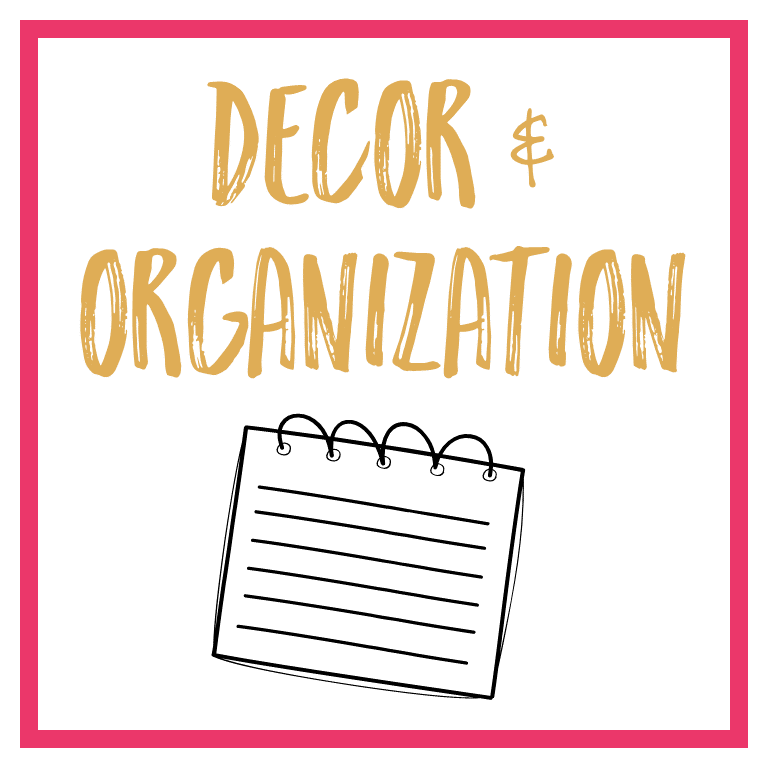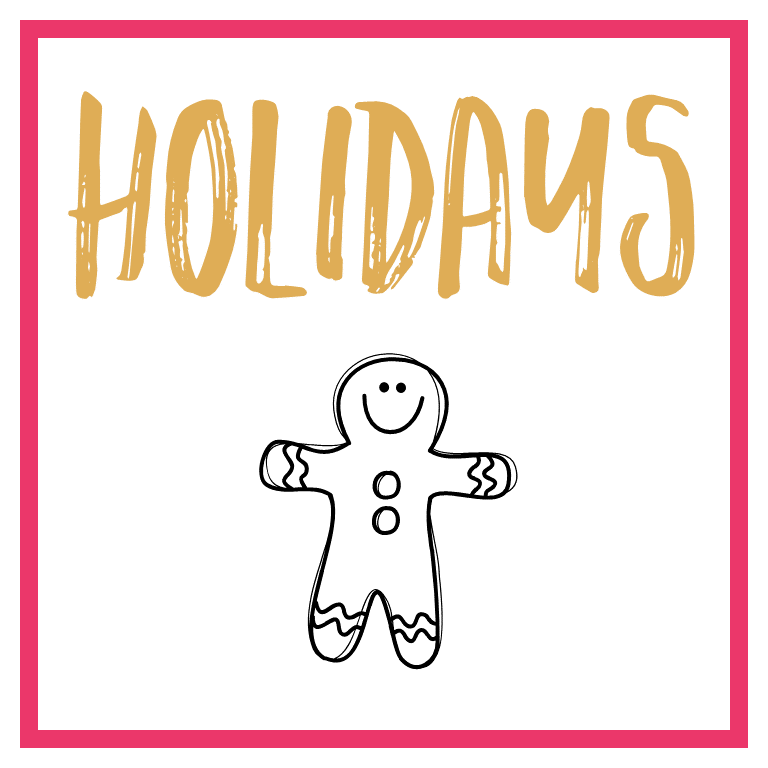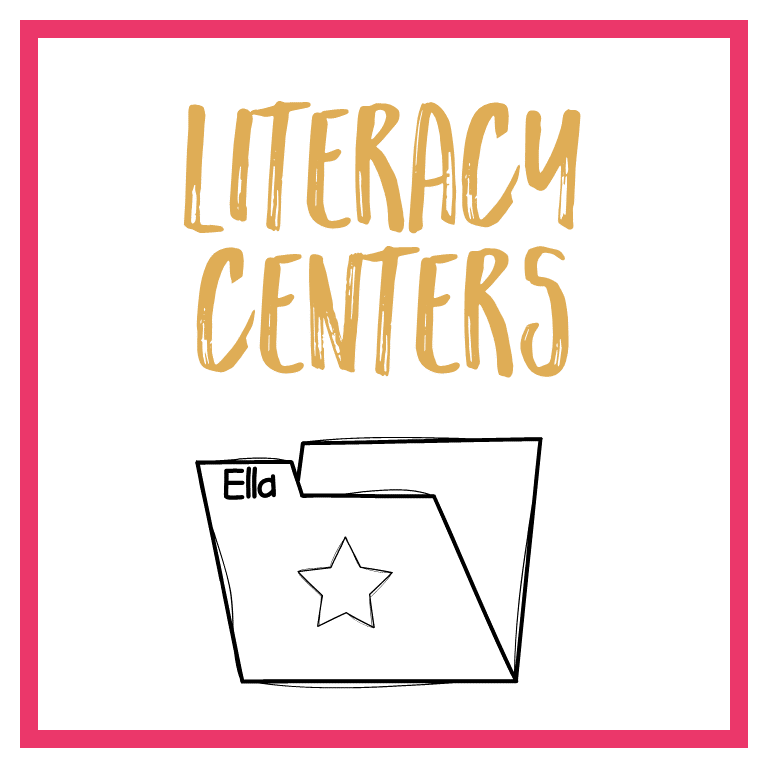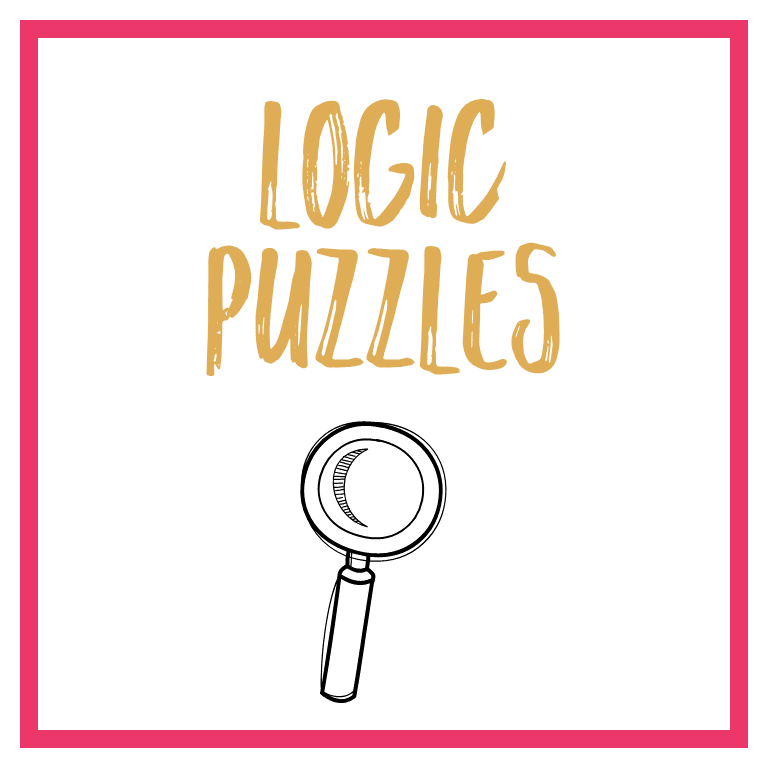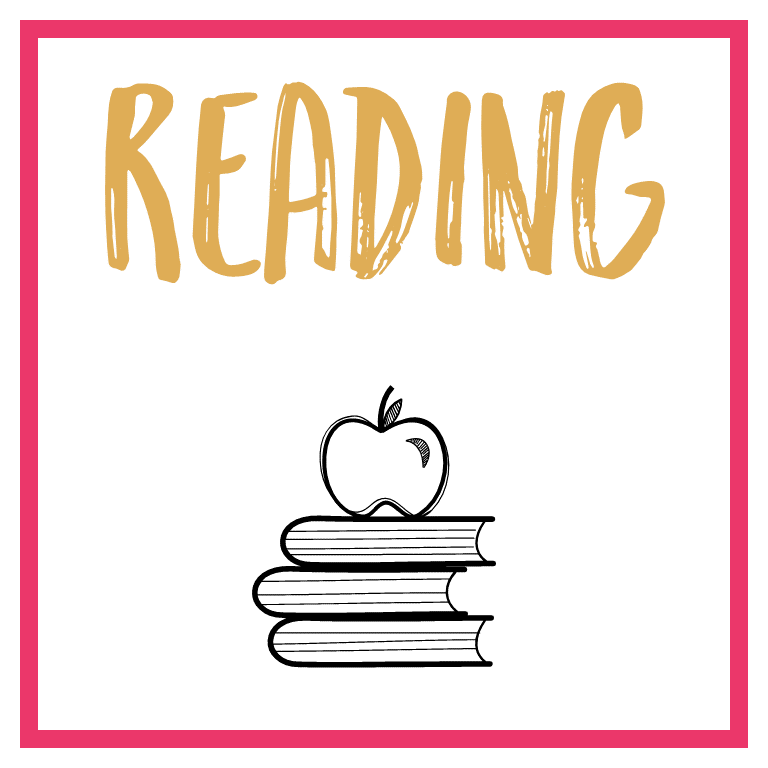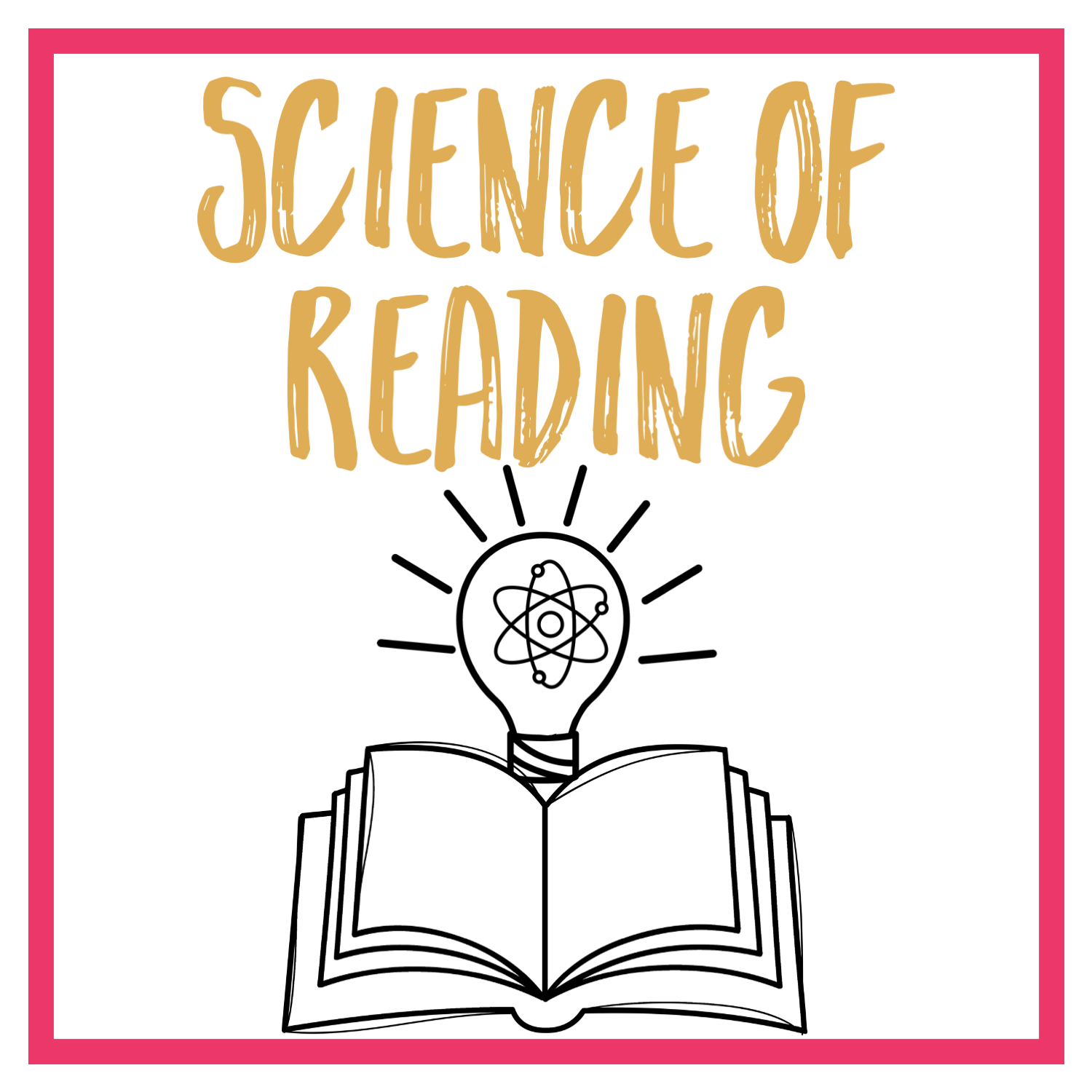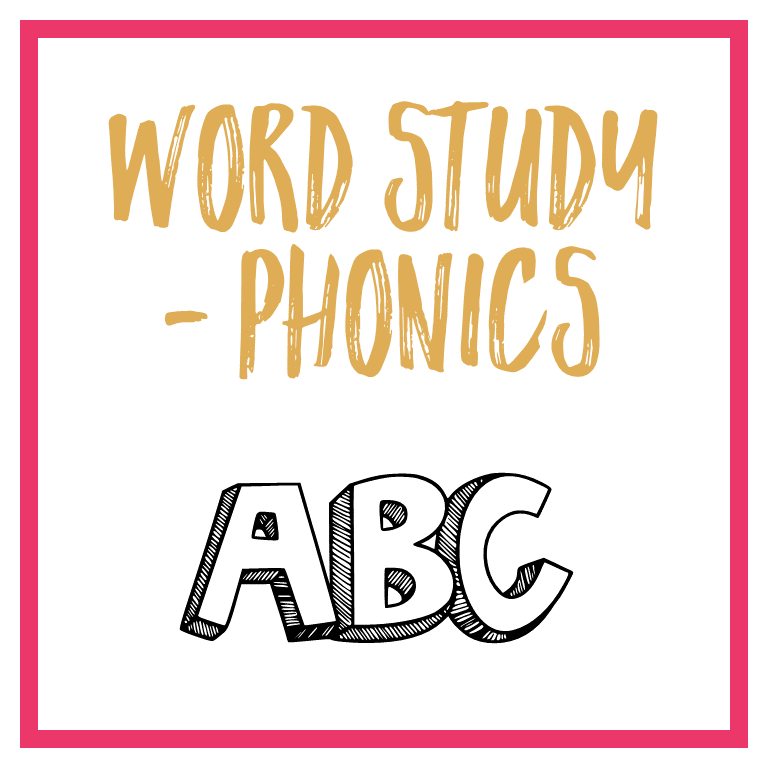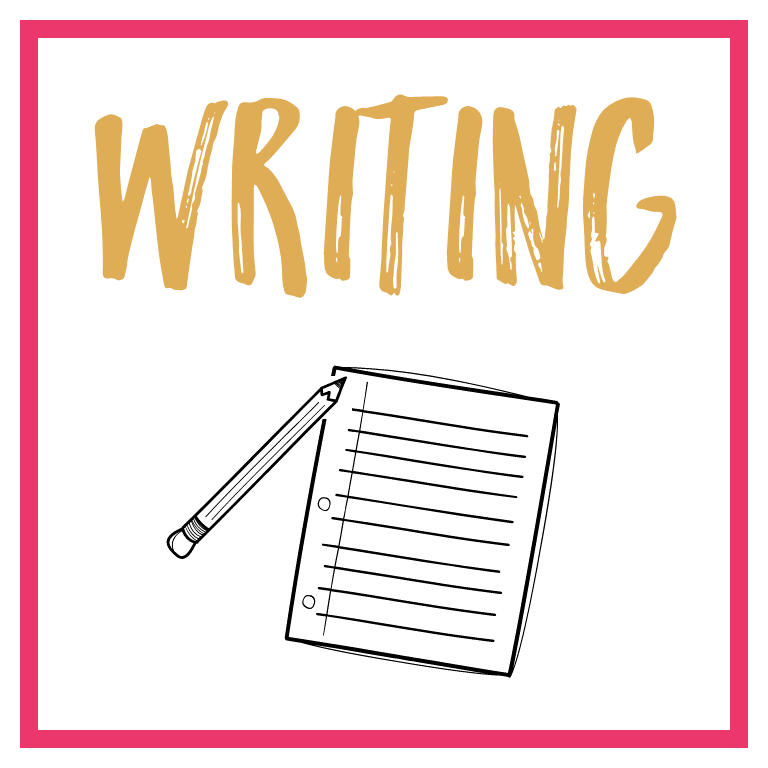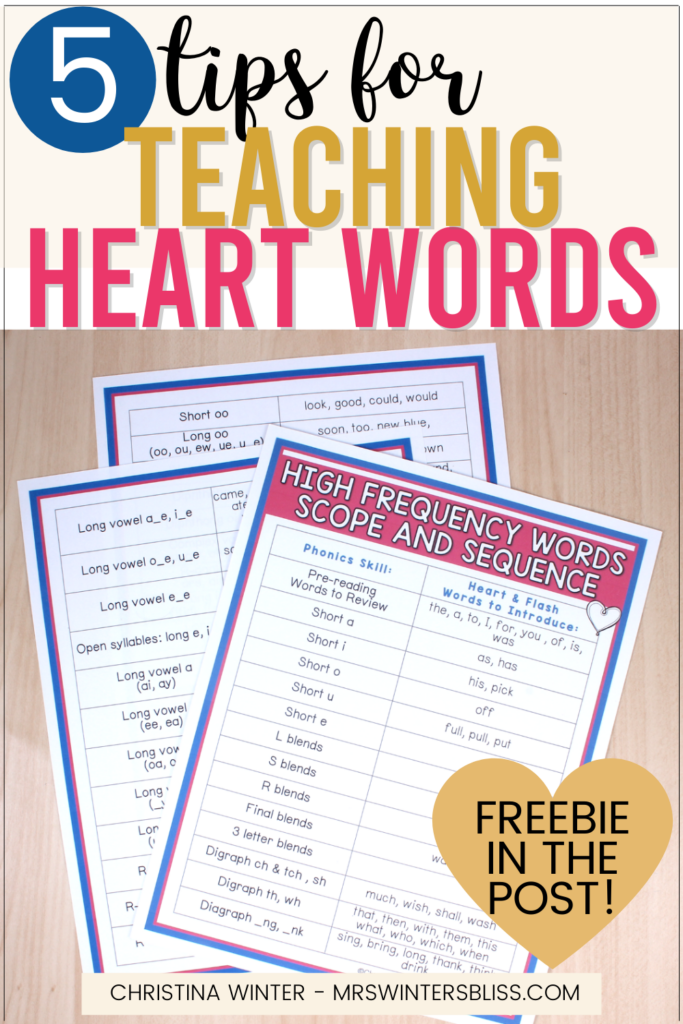
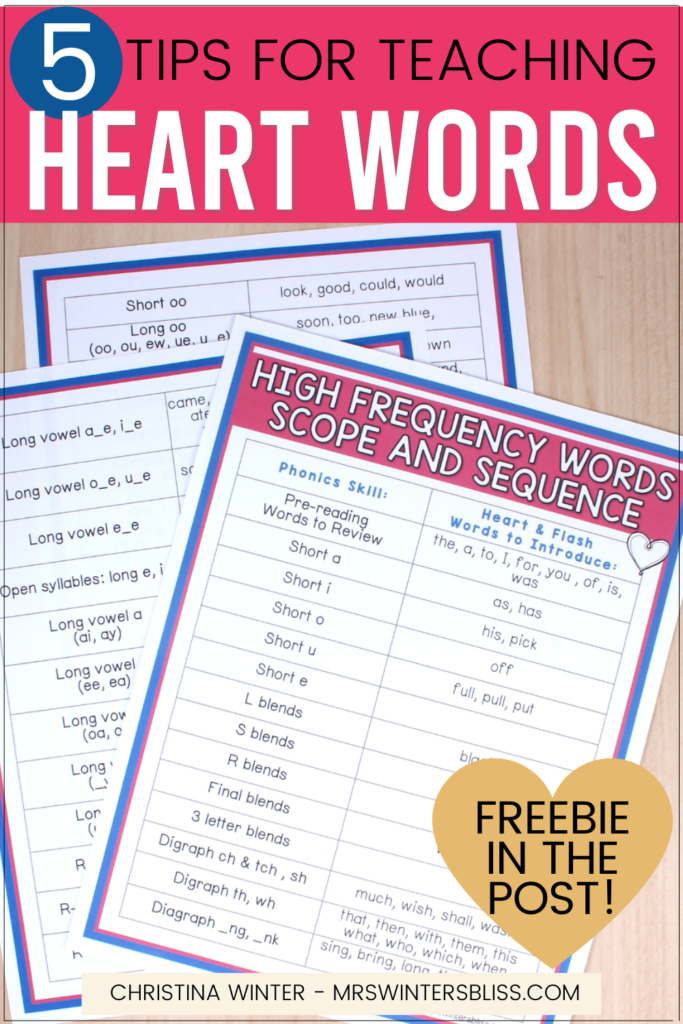
In this post, I share 5 tips for teaching Heart Words in the classroom, a high-frequency words scope and sequence to guide you, and my Heart Words resource and activities to help kindergarten, first and second grade students learn sight words.
Well guys, it turns out you actually CAN teach an old dog new tricks! Lately, I’ve been learning all about using the Heart Word method to teach students high-frequency words and it has changed me and the way I’d teach irregular words. And as it turns out, many of you feel the same!
Witnessing your interest and enthusiasm for learning about the Heart Word method, makes me want to do a happy dance 💃💃! I’ve also received a lot of really smart questions regarding exactly how to teach students Heart Words, so I wanted to share some more information that I hope will help to answer some of those questions.
Today I’m excited to share 5 tips for Teaching Heart Words in your classroom!
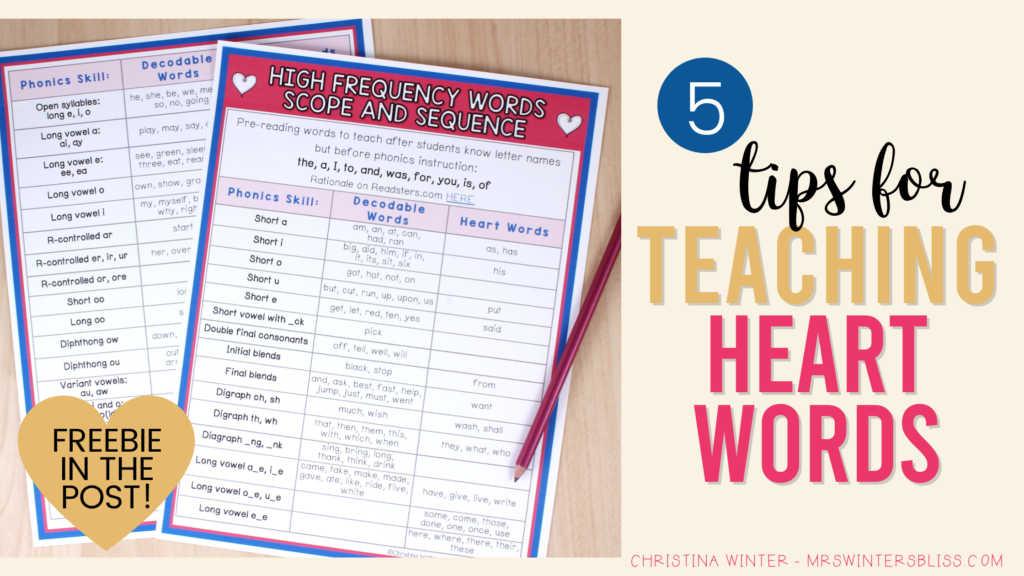
1. Pre-teach 10-15 Words
After students know all the letter names, but before they start phonics instruction, you need to teach them 10–15 very high-frequency words.
As the teacher, you can select these words based on your students and your reading material, but if you want some guidance, I think this recommended list and order is great:
10 Sight Words for Pre-Readers to Learn
| Word | Dolch Frequency Rank | Fry Frequency Rank |
|---|---|---|
| the | 1 | 1 |
| a | 5 | 4 |
| I | 6 | 20 |
| to | 2 | 5 |
| and | 3 | 3 |
| was | 11 | 12 |
| for | 16 | 13 |
| you | 7 | 8 |
| is | 22 | 7 |
| of | 9 | 2 |
Teaching these words in the order listed above helps minimize confusion for students. For example, to and of are widely separated on the list because they are both two-letter words with an o, and the t and f have similar formations..
How to Teach the 10-15 words
While some children will learn to recognize words on their own as they are read to, without any prompting, others will need explicit instruction and practice to learn the words.
Introduce your students to just one word at a time. To help them learn it you can simply use flashcards and point the word out when it appears in texts you are reading. Don’t move on until it is mastered. Continue to review the mastered words while learning the new one.
You’ll know students have mastered the word when they can 1) find the word in a list of other words, (2) find the word in a text, (3) read the word from a card, and (4) spell the word.
Once you have those 10-15 words under their belt they are ready to begin their phonics instruction!
2. Eliminate Confusions
When students learn pairs of words that are similar, they can easily get confused. The words may look the same or sound the same which can leave students feeling mixed up!
Examples of words that are predictably confusing include:
💖 where – were
💖 then – they
💖 the – a
💖 when – then
💖 of – for
💖 she – the
To help students eliminate the confusion you can start by pointing out the similarity and explaining it. Then give students an idea or little ditty to help them correct it.
For example, if I were teaching the words then and they. I would acknowledge that the words can easily get confused because they look so similar! To help them correct the confusion I would give them the ditty, “THEY like to go to the Y(MCA) so the word they has a Y.
3. Group Words with Similar Patterns
Students learn words more easily when they are grouped together than when they have to learn them one at a time. For this reason, it is smart to group words that have similar spelling patterns, even if the pattern is irregular.
Instead of teaching the flash word he in isolation as a word to be memorized, you can teach he, be, we, me, and she at the same time. Go, no, and so are also flash words that can be learned together.
The heart words his, is, as and has can all be taught as VC and CVC words because the letter s in each of those words makes the sound /z/.
Then there are words that are not easily grouped by spelling pattern. In that case you can introduce them when you teach the regularly spelled part of the word. For example, when you teach the digraph th you can introduce the words they and their.
4. Follow a Scope and Sequence
I know it takes a lot of time (and brainpower!) to map out when you are going to teach each Heart and Flash word. It can feel overwhelming. So to help you out I have created a 2 page High Frequency Words Scope and Sequence!
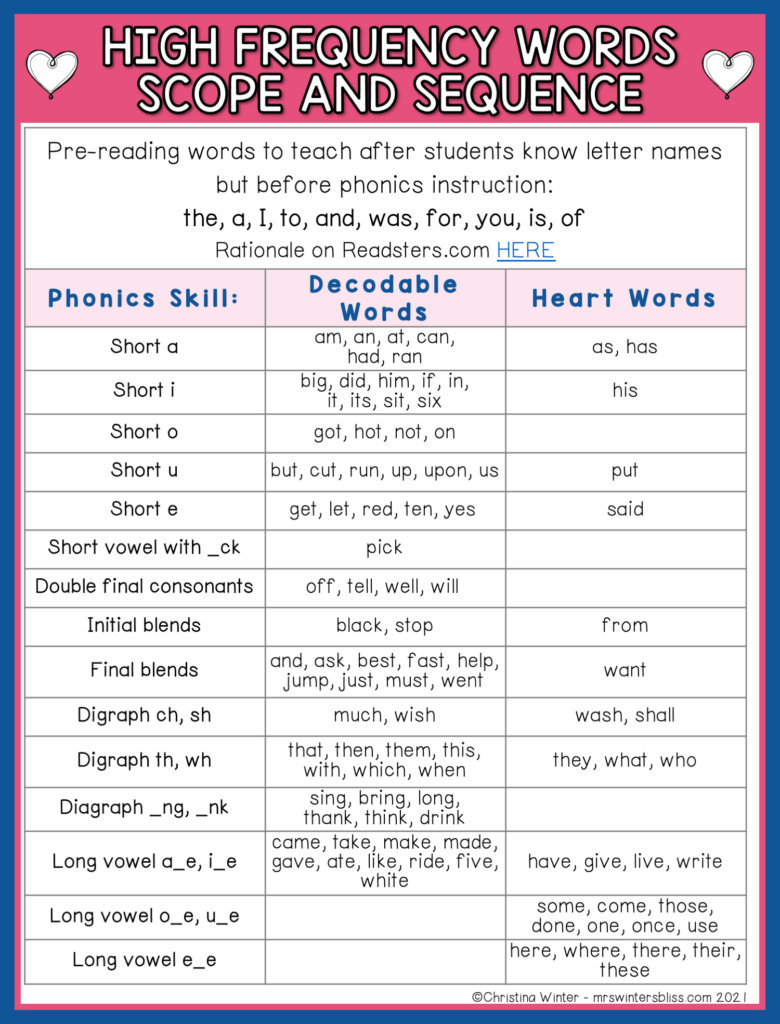
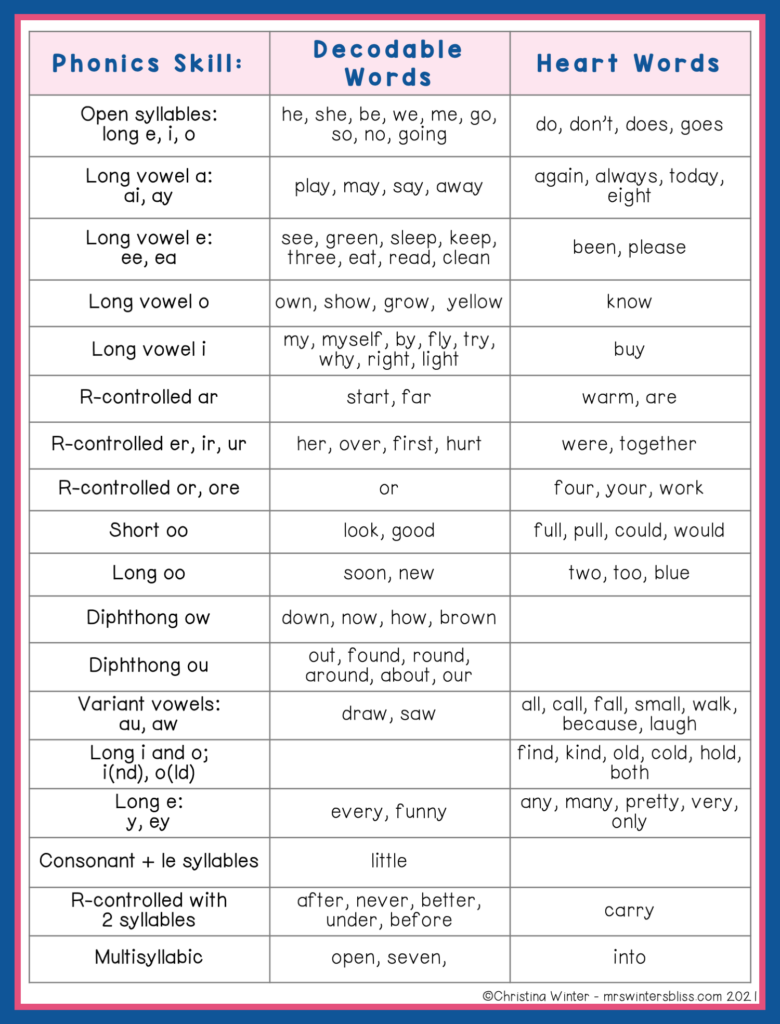
This scope and sequence names a phonics skill and identifies the Heart and Flash words that go along with that skill. It’s an awesome guide that will save you SOOOO much time!!
💖 DOWNLOAD this FREE HIGH FREQUENCY (HEART & FLASH) WORDS SCOPE & SEQUENCE HERE
Wondering which order to teach the phonics skills? I’ve shared a research-based phonics scope and sequence for K-2 students in this post.
A Resource to Help You Teach Heart Words
Looking for more resources to help teach Heart Words in your classroom? Take a peek at my Heart Words resource. It’s a NO PREP, science-based resource that has everything you need to successfully teach your students how to utilize the heart word method.
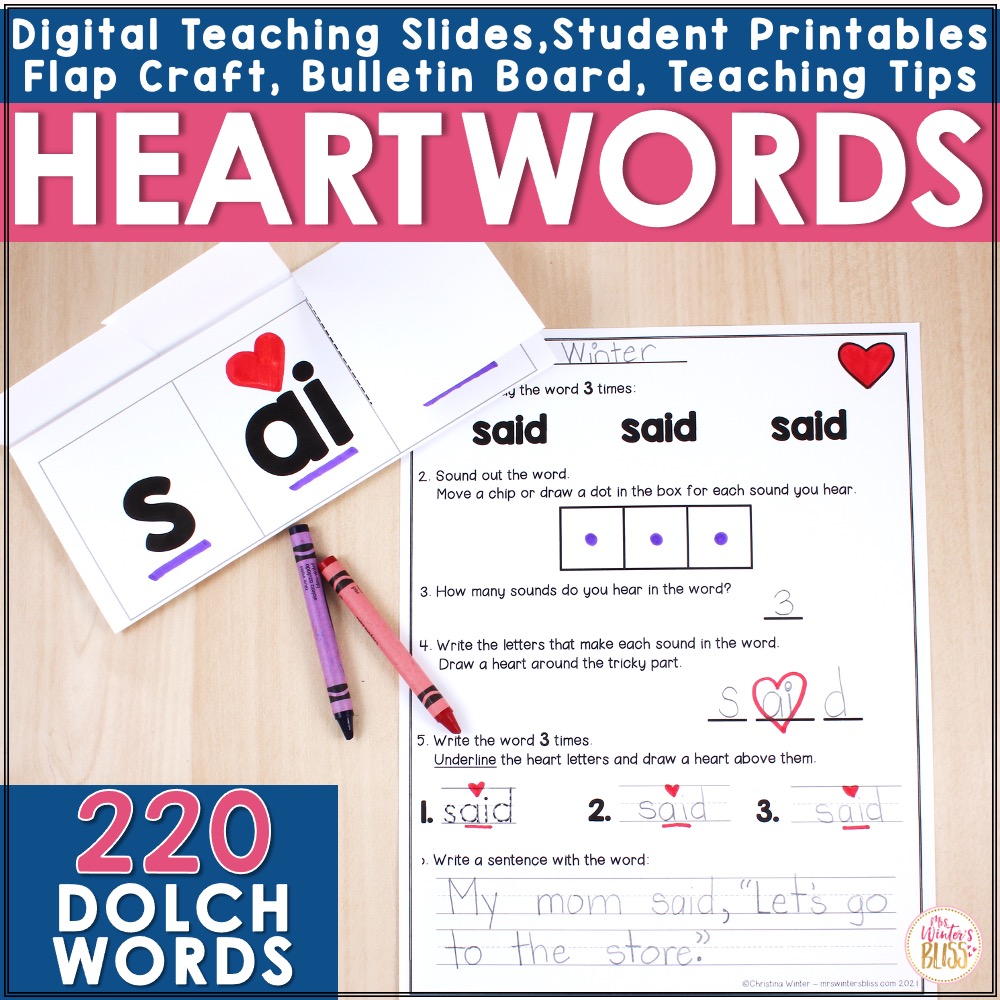
The resource includes information on best practices, teaching tips, EDITABLE digital teaching slides and printables for 220 high frequency sight words, and much MORE!
Feeling eager and motivated to start integrating sight words into your phonics lessons?? Take a deeper look at the resource by downloading this FREE sample that includes 5 different words!
-
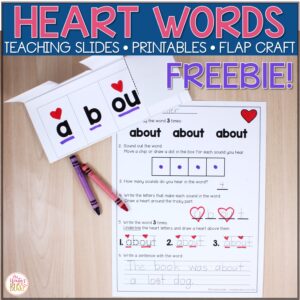 Free Heart Words – Teaching High Frequency ( sight words )$0.00Rated 4.93 out of 5 based on 44 customer ratings
Free Heart Words – Teaching High Frequency ( sight words )$0.00Rated 4.93 out of 5 based on 44 customer ratings
I hope the information and resources I’ve shared today help to answer some of your questions about how to teach students high-frequency words using the Heart Word Method. More questions on your mind? Drop me a comment below and I’ll do my best to find you an answer!
-shop this post-
-
 Free Heart Words – Teaching High Frequency ( sight words )$0.00Rated 4.93 out of 5 based on 44 customer ratings
Free Heart Words – Teaching High Frequency ( sight words )$0.00Rated 4.93 out of 5 based on 44 customer ratings -
Sale Product on sale
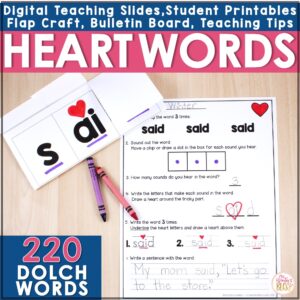 Heart Words – Teaching High Frequency (sight words)Earn 0 Reward Points
Heart Words – Teaching High Frequency (sight words)Earn 0 Reward Points$34.00Original price was: $34.00.$29.50Current price is: $29.50.Rated 4.96 out of 5 based on 24 customer ratings
–PIN for LATER–


